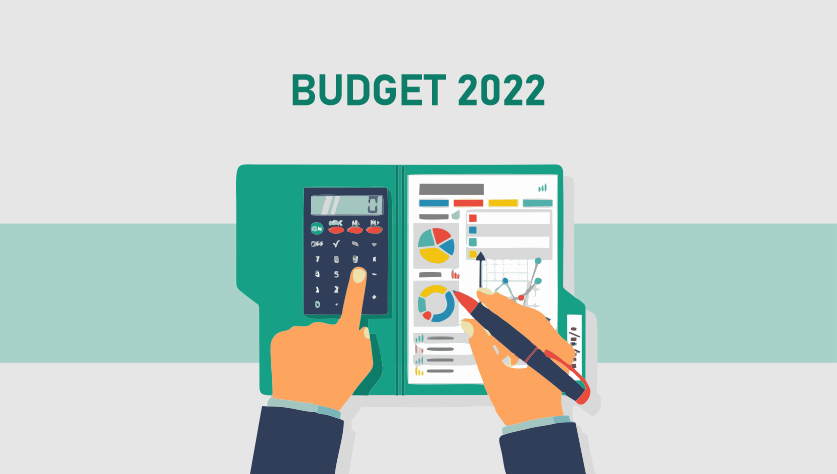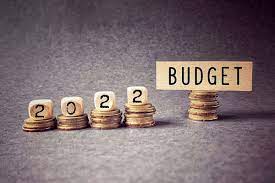On Wednesday, Prime Minister Shri Narendra Modi expressed that the emphasis of Budget 2022 is on providing essential niceties to the poor, middle class, and youth. He also affirmed that India must become self-reliant.
ALL ABOUT THE MAJOR ANNOUNCEMENT BY FM NIRMALA SITHARAMAN
According to Shri Modi, Budget 2022 is a step ahead towards a contemporary and self- sustaining India. As analogized to the investments in the UPA administration, Budget 2022 suggests making a four-fold upsurge in public investments will open up humongous prospects. The Union Budget had been praised as “people-friendly” and “progressive” by the Prime minister on Tuesday previously.

As per Finance Minister Nirmala Sitharaman, a premeditated judgment was taken not to boost taxes because of the tribulation that people have been encountering due to the pandemic. The government is anticipated to rise at 9.27 percent in the forthcoming year. With a focus on four pillars of growth — inclusive development, productivity enhancement, energy transition, and climate action — the Budget presents a blueprint of the economy from India at 75 to India at 100, Sitharaman conveyed.
Approximation of the Budget
The Budget evaluates the effective capital expenditure of the Central government at Rs 10.68 lakh crore in 2022-23, assembling up about 4.1 percent of the GDP. The gross GST assemblages for January 2022 are Rs 1,40,986 crore — the loftiest since the advent of the tax in 2017 — the Finance Minister stated. In a significant stimulus for digital currency, Sitharaman remarked that the digital rupee will be administered using blockchain technology by the RBI starting 2022-23. This will give a major boost to the economy, the Finance Minister expressed. She added that revenue from the transfer of any virtual digital investment shall be taxed at the pace of 30 percent.

Impact of Budget 2022
The Budget arrives at a moment when India’s employment pace has swooped. Historic unemployment and sputtering transition not only aggravated unevenness of revenue and capital but also directed to an expansion in the indisputable number of poor people in India — an unparalleled and discomfiting turnaround in poverty alleviation. In the years ushering up to Covid-led technical recession, there was much controversy about the government’s approach.
Speculations from surveys The Economic Survey tabled merely a day before Sitharaman will notify the Union Budget 2022-23, accentuating the requirement for the government to equip a buffer against stresses such as the uncertainty in the multinational circumstances, the cycle of liquidity pullback by major central banks, etc.
The Survey has pegged that in the government’s drudgeries to construct a post-Covid economy, demand standards independently will not provide the resolution. This is established principally on the attribute that a broad salmagundi of aspects such as consumer demeanour, technological developments, geo-politics, supply-chains, weather change could interact in unanticipated ways, and India will require to generate a supply-side approach to deal with the long-term unpredictability of the post-Covid world.
The previous year, the government resolved to set up an asset reconstruction company that will take over the bad loans of banks, offering them the flexibility to subsidize the economic comeback. Just days ahead of the Union Budget 2022-23, this recommendation to set up a ‘bad bank’ was cleared. State Bank of India Chairman Dinesh Khara said the proposed ‘bad bank’ has “now” acquired all essential approvals including from the Reserve Bank of India. It is prepared to initiate procedures with 15 cases worth Rs 50,335 crore to be transferred by March 31, he conveyed.

FM about her ideology in short and hoping for something big
On Wednesday, Sitharaman guaranteed the 8 percent GDP growth target for the 2023 fiscal is attainable if things go the path they are going and slowly all sectors come up with government authorization.
She also added sectors like hospitality and the contact intensive sectors still need subsidies and that has been provided for in the budget.
“So, our acquaintance is if even those sectors rejuvenate as much as they would like to with aid from the government and the techniques – banking and others – that (8 percent GDP growth) is possible,” she apprised in an exclusive interview with Rahul Joshi, Editor-in-Chief, Network18.
Sitharaman’s statement arrives against the backdrop of the Economic Survey 2021-22 which has launched India’s growth for the financial year 2023 at 8-8.5 percent.
Sitharaman said, despite all the misanthropes FDI into India and hypotheses about other central banking regimes taking diverse a call whether it is the Fed or anywhere else, FDI is still prominently coming into the nation.
“FDIs come in to be financed in, to be on the panels of companies and then take a call and therefore, I think firms now are pleased to be partnering with a lot of FDIs which are coming in and expanding their manufacturing abilities servicing abilities not merely to serve the Indian market, but also be competent to access global demands and our PLI scheme also suggests that,” she told Joshi.


